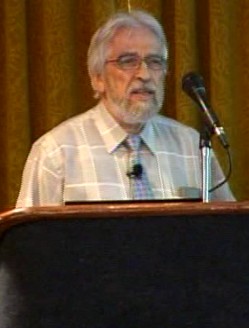Year: 2006
27th Annual Meeting of the Society for Scientific Exploration, June 25-28, 2008, Millenium Harvest House, Boulder, CO. The Basic Structures of Matter - Supergravitation Unified Theory (BSM-SG) is based on an alternative concept of the physical vacuum. At the basic level the theory suggests a physical model of two fundamental particles associated with the Planck's scale parameters (time and length). In pure empty space, as assumed precondition of the physical vacuum, they interact by close range forces according to a law called Supergravitation (SG) and congregate in formations possessing vibration properties with embedded frequency ratio equal to the fine structure constant, ~ 1/137. Such formations are embedded in the superfine structure of the physical vacuum and the elementary particles. In the physical vacuum space, the SG forces are strong at atomic distances. The suggested model works well in different fields of Physics. It provides a relation between the electrical, magnetic and gravitational fields with new understanding of the gravity and inertia. The unveiled oscillating properties of the electron [5] permit understanding the physical mechanism of quantum mechanical interaction between the electrons in EM activated plasma and the physical vacuum. The new understanding about the physical vacuum allows predicting a possibility of unidirectional change the gravitational force acting on a material object. By proper modulation the parameters of the physical vacuum, the gravito-inertial mass of a specifically designed spacecraft would be reduced, so it could be accelerated with less energy. Technically the new space drive mechanism could be realized by electromagnetically activated neutral plasma surrounding the spacecraft. In such approach secondary effects, such as optical glow, hissing noise, light bending and disturbed propagation of EM waves and Earth magnetic field would take place in the surrounding zone. In atmospheric environment, the spacecraft may exhibit a reduced turbulence since the mass of the air molecule should be also affected. The predicted space drive should work also in a deep space. In this case a gas cloud surrounding the spacecraft is necessary. Initial laboratory experiments confirm some of the predicted effects, such as, weak propulsion, optical glow, hissing noise and reduced turbulence. Extensive research in this new field is still necessary.


